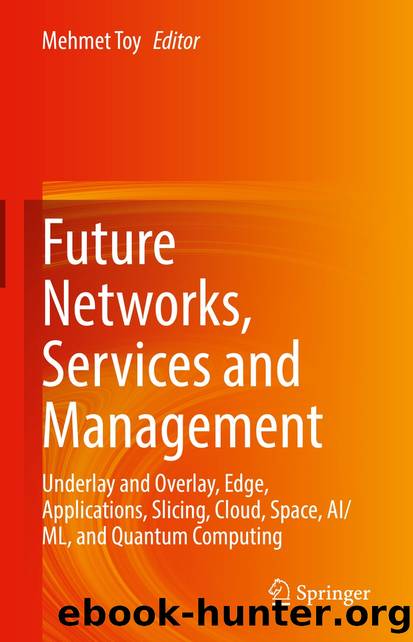Future Networks, Services and Management by Unknown

Author:Unknown
Language: eng
Format: epub
ISBN: 9783030819613
Publisher: Springer International Publishing
Where peering becomes too complex to manage is where users deploy ten or more VPCs that require interconnectivity. While a user might start out with only one or two VPCs that require connectivity, this often snowballs into most if not all VPCs needing connectivity. The architecture that results from all VPCs needing connectivity is the full mesh architecture, and in this case, the number of peering connections is equal to n being the number of VPCs, and number of peering connections = n(n â 1)/2. This means that 10 VPCs peered together in a full mesh will equal 45 peering connections, and each route table for each VPC will need a route to each VPC, meaning 45 manually created routes need to be deployed in each VPCs route table. Due to the complexity of the full mesh deployment, users of the cloud will sometimes default to a hub and spoke peering architecture, with centrally hosted shared services in a central VPC, and peering connection to each application that resides in a spoke. Figure 7.11 shows both the full-mesh and hub-and-spoke peering architectures commonly used.
Fig. 7.11Full-mesh and hub-and-spoke peering topologies
Download
This site does not store any files on its server. We only index and link to content provided by other sites. Please contact the content providers to delete copyright contents if any and email us, we'll remove relevant links or contents immediately.
Harry Potter and the Goblet Of Fire by J.K. Rowling(3045)
Never by Ken Follett(2880)
Shadow of Night by Deborah Harkness(2718)
Ogilvy on Advertising by David Ogilvy(2682)
Zero to IPO: Over $1 Trillion of Actionable Advice from the World's Most Successful Entrepreneurs by Frederic Kerrest(2393)
The Man Who Died Twice by Richard Osman(2298)
Machine Learning at Scale with H2O by Gregory Keys | David Whiting(2291)
Book of Life by Deborah Harkness(2263)
How Proust Can Change Your Life by Alain De Botton(2261)
My Brilliant Friend by Elena Ferrante(2223)
0041152001443424520 .pdf by Unknown(2220)
The Tipping Point by Malcolm Gladwell(2204)
How to Pay Zero Taxes, 2018 by Jeff A. Schnepper(2099)
Will by Will Smith(2041)
Purple Hibiscus by Chimamanda Ngozi Adichie(1981)
Hooked: A Dark, Contemporary Romance (Never After Series) by Emily McIntire(1959)
Borders by unknow(1785)
Rationality by Steven Pinker(1765)
Daughter of Smoke and Bone by Laini Taylor(1744)
